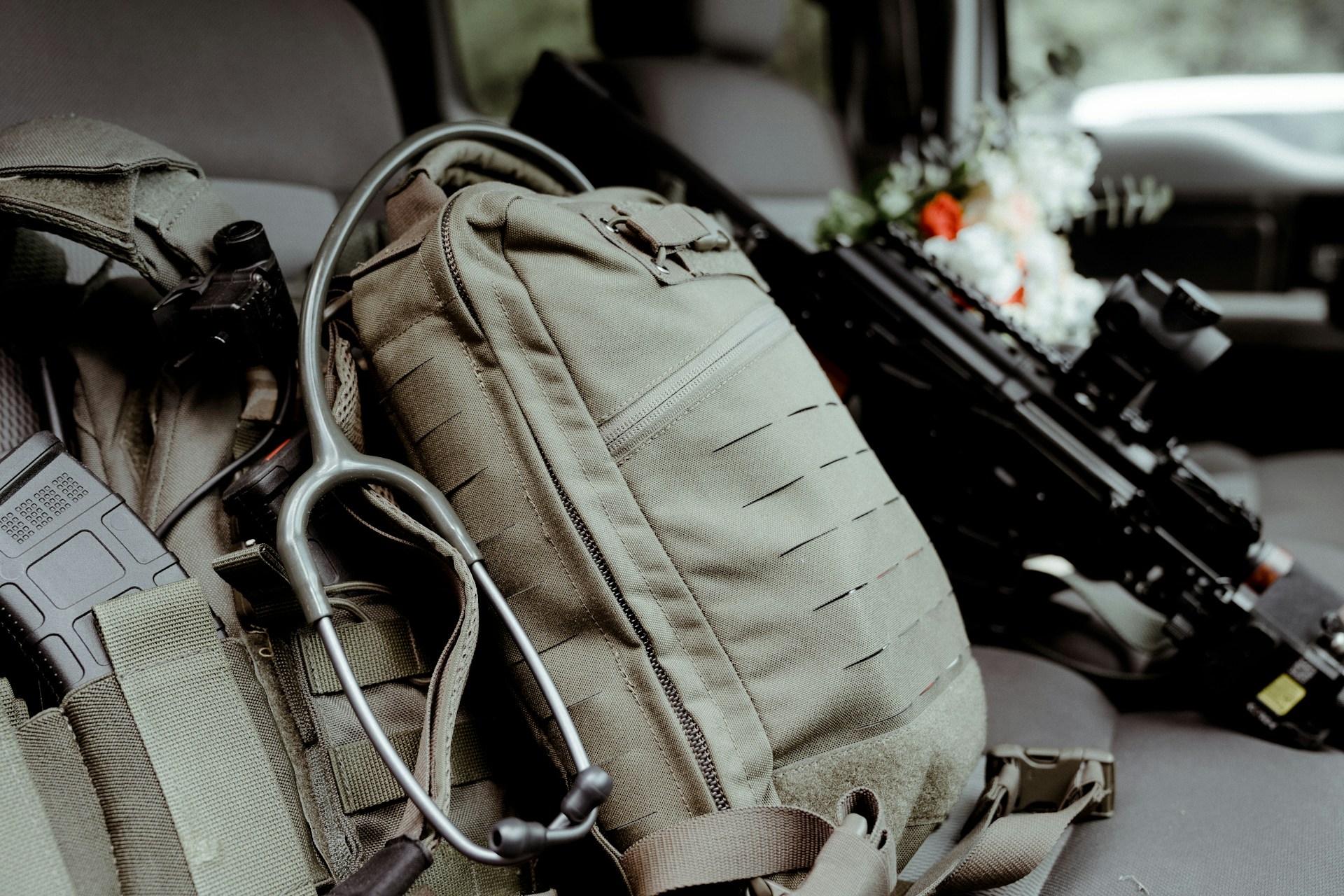Preparedness
Unlock the Secret to 25-Year Survival Food Storage

When it comes to emergency preparedness, having a dependable food supply with a long shelf life is essential. A 25-year shelf life for survival food assures you that the food will remain edible and nutritious for decades, providing sustenance during a crisis.
Achieving such longevity in food storage involves selecting the right food kits and employing effective preservation techniques. It’s crucial to choose high-quality survival food kits that are minimally processed and made with natural ingredients. Look for reputable brands that offer transparent labeling to ensure confidence in your stockpile.
Proper storage is key to maintaining the shelf life of your food. Store your kits in a cool, dark place, ideally between 60-70°F, and use airtight containers like food-grade plastic buckets to protect against moisture and oxygen exposure. Regularly rotate your stock and check for signs of spoilage to maintain safety.
“Freeze-dried meat is considered the ultimate long-term protein source when it comes to survival food.” With a shelf life exceeding 25 years when stored correctly, it surpasses other food types in longevity. Its lightweight nature makes it easy to transport, and rehydrating it is simple when water is available. Freeze-drying retains most nutrients, providing an excellent source of protein, vitamins, and minerals.
Most survival food with a 25-year shelf life utilizes dehydration and freeze-drying methods, reducing moisture exposure. When stored in protective containers, these foods remain edible for decades. Best practices for maximizing shelf life include using oxygen absorber packets and storing food in Mylar bags or food-grade buckets.
For those looking to store food for even longer periods, options like wheat, white rice, dried beans, oats, and pasta are excellent choices, capable of lasting 30 years or more with proper storage. The key is to keep these foods sealed airtight in a cool, dark environment and to avoid temperature fluctuations.
Preserving food with a 25-year shelf life involves careful planning. Mylar bags with oxygen absorbers are effective for blocking light and removing oxygen, preventing oxidation and bacterial growth. Regularly inspect stored food for spoilage and rotate stock using the first-in, first-out method to ensure freshness.
When selecting emergency food kits, prioritize taste, nutrition, and ingredient quality. Look for meals that retain flavor and texture through preservation methods like freeze-drying. Variety is important to avoid taste fatigue, and ease of preparation is crucial, especially in off-grid scenarios.
Nutritional content is paramount, with a focus on protein, vitamin C, and essential minerals. Ensure the food meets caloric needs, as the average adult requires 1500-2000 calories in survival situations. Favor brands with recognizable ingredients and minimal preservatives.
Cost-effectiveness is also important. Calculate the cost per full day’s worth of food or per calorie to determine value. Bulk purchases and online deals can help build your supply economically. With proper planning and storage, you can ensure a reliable food supply for emergencies without overspending.
Proper storage containers, such as opaque plastic buckets with gasket seals or Mylar bags, are essential for long-term food storage. A cool, dark, and dry environment is ideal, with basements or climate-controlled rooms being excellent options. Organize your stock using the first-in, first-out method to maintain freshness.
In addition to food, ensure you have access to cooking equipment and fuel for meal preparation during emergencies. Proper protocols for long-term storage and preparation will keep your food supply intact and safe for consumption.
For freeze-dried and dehydrated items, follow best practices to maintain quality. Seal items in Mylar bags with oxygen absorbers and store in cool, dark spaces. Rehydrate foods correctly to preserve nutrition and taste. By adhering to these guidelines, your emergency food will remain viable for decades.
Building an emergency food supply requires careful planning and budgeting. Bulk purchases and price tracking services can help you stock up economically. With diligent research and proper storage, you can ensure your family has access to nutritious food with a 25-year shelf life when disaster strikes.
Having a reliable stock of long-lasting emergency food is a crucial part of preparedness. By following best practices for selection, storage, and budgeting, you can keep your family nourished during extended emergencies.
Let us know what you think, please share your thoughts in the comments below.

Preparedness
Discover the Unexpected Joys of Being a Prepper

Reflecting on recent years, it’s clear that being a prepper has offered me a sense of gratitude and peace of mind that many may not experience. The world has faced its fair share of challenges, with disasters—both natural and man-made—making headlines frequently. The rush to stock up on essentials during lockdowns highlighted the importance of being prepared. People scrambled for items like hand sanitizer and toilet paper, leading to a surge in demand for preparedness companies.
This situation underscored a significant advantage of being a prepper: peace of mind. When chaos ensues, knowing that your family is secure and you don’t have to join the frantic crowds is invaluable. Being a prepper means embracing self-reliance in all aspects of life. There’s a unique empowerment in knowing that your family possesses basic survival skills, whether it’s changing a tire, finding water, or starting a fire.
Moreover, preppers have the opportunity to assist others. In a blackout, you might be the only one with a flashlight, or the person with the necessary multi-tool to fix something. Your first aid skills could save a life, and your situational awareness might help avoid danger.
Self-reliance also reduces anxiety and enhances problem-solving skills. While many are familiar with the ‘fight or flight’ response, there’s a third: “Fight, Flight, or Freeze.” Unfortunately, anxiety can cause some to freeze. However, practicing basic skills makes it less likely for preppers to freeze, or if they do, it’s only momentarily.
Living a prepared lifestyle means being less of a burden during crises. If more people were ready for even short durations, there would be fewer store shortages and fewer people needing rescue, allowing faster aid to those truly in need.
Additionally, prepping aligns with environmental consciousness. While I don’t consider myself an environmentalist, I do value a healthy ecosystem. I want clean rivers and lakes for fishing, uncontaminated well water, and a thriving wilderness.
Regardless of when you began your prepping journey, every skill learned and item stored contributes to better preparedness for the future. It’s a lifestyle choice that offers much to be thankful for.
Let us know what you think, please share your thoughts in the comments below.
Preparedness
Ignite the Impossible: Fire-Making Secrets for Rainy Adventures

Mastering the art of fire-making is essential for any outdoor enthusiast, but doing so in the rain requires an elevated skill set. Whether you’re an avid camper or hiker, knowing how to ignite a fire in wet conditions can be crucial. In dire situations, a fire can mean the difference between life and death, offering warmth and the ability to cook food.
The first step in starting a fire in the rain is to gather tinder. Pine needles are an excellent choice because they dry quickly. Alternatively, you can use tree bark, as it often has a dry side. It’s wise to carry your own firestarter for emergencies, but if you find yourself without one, these natural options can be lifesavers.
Next, seek out kindling and fuel wood. Search for dry wood in areas with natural cover, such as beneath a leaning rock, a fallen tree, or the lower branches of an evergreen. To ensure the wood is dry enough, test the kindling by snapping it; it should break easily. For larger branches, split them with a knife to access the dry wood inside.
Once your materials are collected, choose a location for your fire. Underneath a large tree is a good option, or you can create a makeshift shelter by stringing a tarp between trees. This will help shield your fire from the rain.
Creating a bed for your fire is essential to keep it off the wet ground. You can use tree bark or construct a bed from branches. This separation is crucial to prevent moisture from extinguishing your fire.
In wet weather, avoid digging a fire pit, as it can fill with water. Instead, build your fire on a slight mound of earth. This elevation prevents water from pooling and dousing your flames.
“Note that cutting bark from a tree should in fact only be done in an actual emergency, as this can damage and even kill the tree.” This is a vital consideration for anyone practicing survival skills in the wild.
By following these steps, you’ll be better prepared to start a fire in challenging conditions. Remember, preparedness isn’t just a hobby; it’s a way of life.
Let us know what you think, please share your thoughts in the comments below.
Preparedness
Beat the Heat Naturally: Old-School Cool Tips

As temperatures rise during the hottest months, staying comfortable without relying on air conditioning can seem daunting. However, there are several effective strategies to keep cool that have been used long before air conditioning became commonplace.
One of the simplest methods is to air out your home during the cooler evening hours. “In the evening as soon as the outside temperatures have dipped below the temp in the house open up the windows and doors and let the house air out.” If safety allows, consider leaving them open throughout the night to maximize airflow.
When morning comes, it’s crucial to close up the house to trap the cool air inside. Shut all windows and doors and draw the blinds. Incorporating blackout or heat-reflecting curtains can significantly help maintain a cooler indoor environment. Additionally, keeping interior doors to the hottest rooms closed can prevent heat from spreading.
Limiting how often you open doors during the day can also help maintain the cool air within your home. If you need to go in and out, try to use doors on the shady side of the house. This simple step can make a noticeable difference in preserving a cooler atmosphere indoors.
These tips not only help you stay comfortable during the sweltering summer months but also promote a more energy-efficient lifestyle. Whether you’re new to the concept of preparedness or an experienced prepper, these strategies can enhance your ability to manage in extreme weather conditions without relying on modern technology.
Let us know what you think, please share your thoughts in the comments below.
-

 Tactical1 year ago
Tactical1 year ago70-Year-Old Fends Off Intruder with Lead-Powered Message
-

 Tactical1 year ago
Tactical1 year agoVape Shop Employee Confronts Armed Crooks, Sends Them Running
-

 Preparedness11 months ago
Preparedness11 months agoEx-Ballerina’s Guilty Verdict Sends Tremors Through Gun-Owner Community
-

 Preparedness9 months ago
Preparedness9 months agoGood Samaritan Saves Trooper in Harrowing Interstate Confrontation
-

 Tactical1 year ago
Tactical1 year agoMidnight SUV Theft Interrupted by Armed Homeowner’s Retaliation
-

 Survival Stories2 years ago
Survival Stories2 years agoEmily’s 30-Day Experience of Being Stranded on a Desert Island
-

 Preparedness10 months ago
Preparedness10 months agoArizona Engineer’s Headless Body Found in Desert: Friend Charged
-

 Preparedness10 months ago
Preparedness10 months agoBoy Saves Dad from Bear Attack with One Perfect Shot